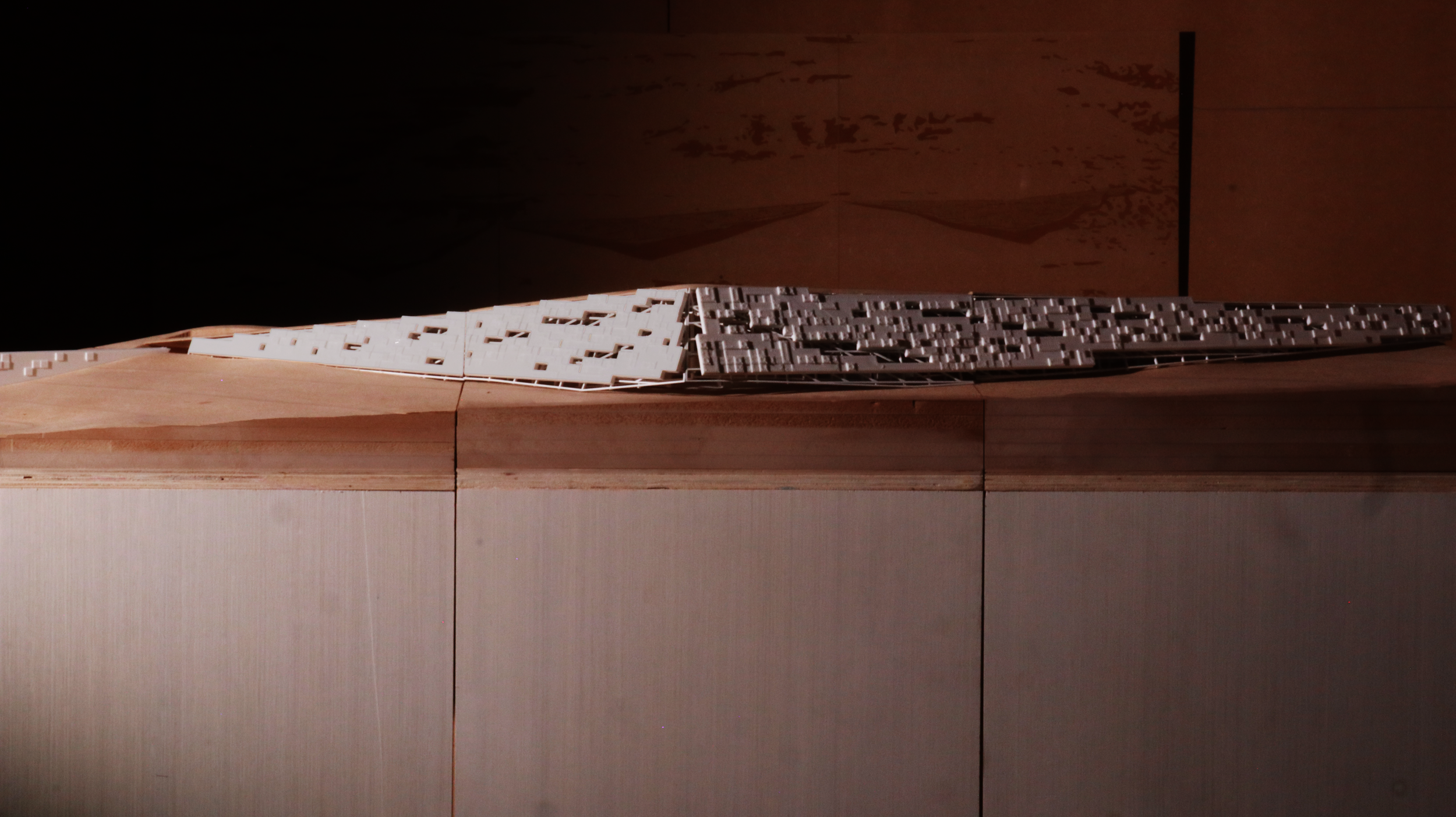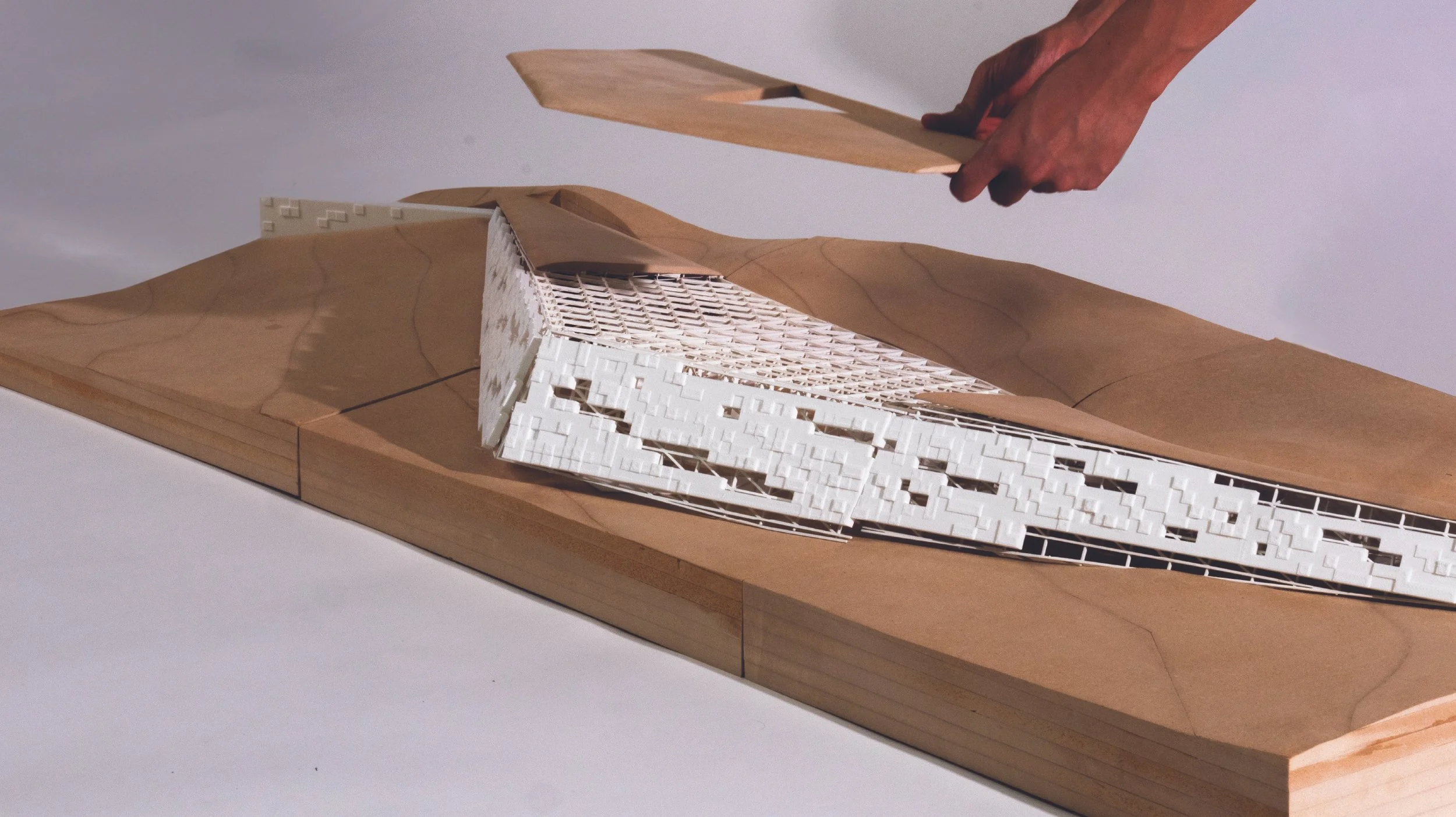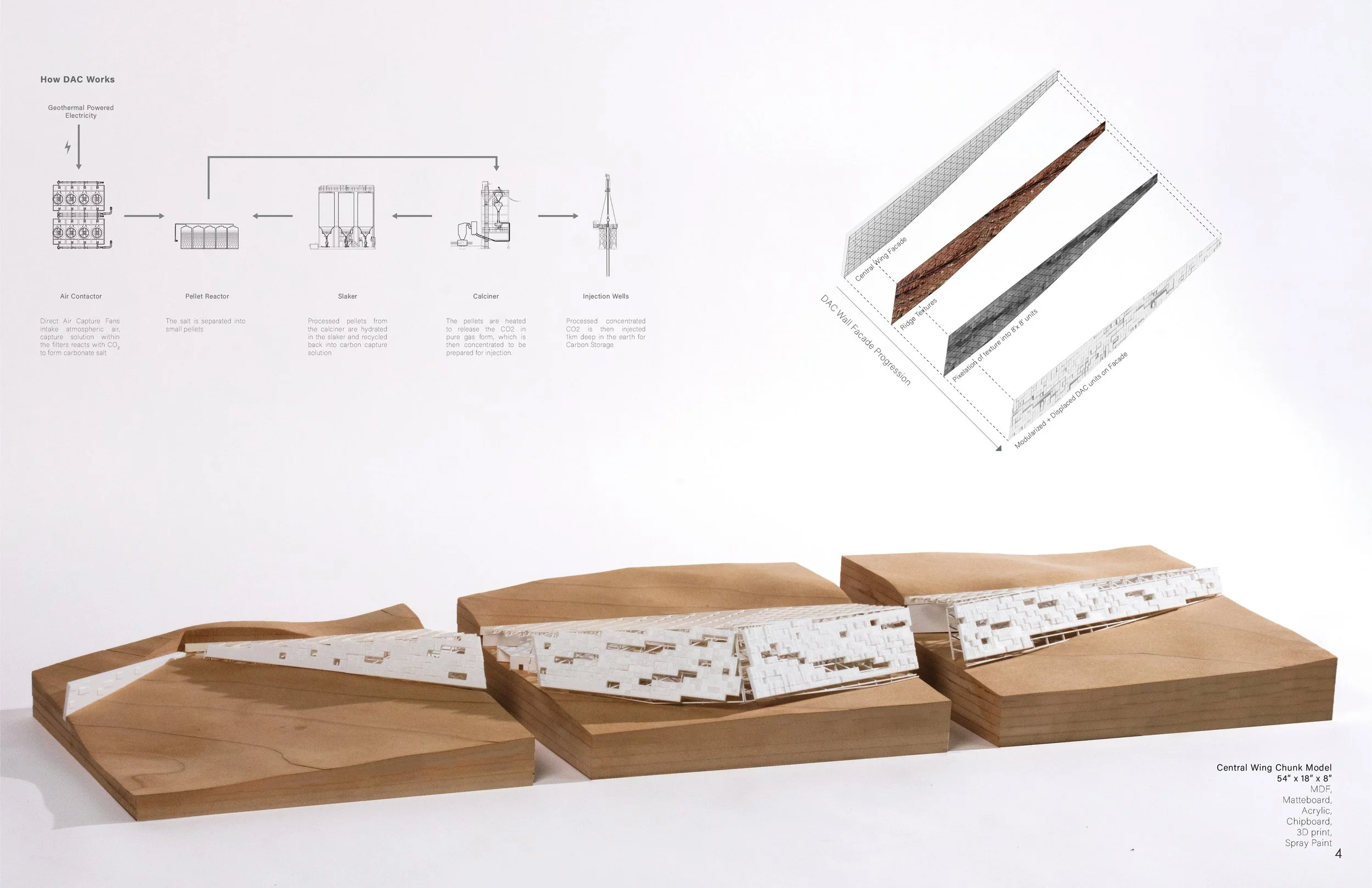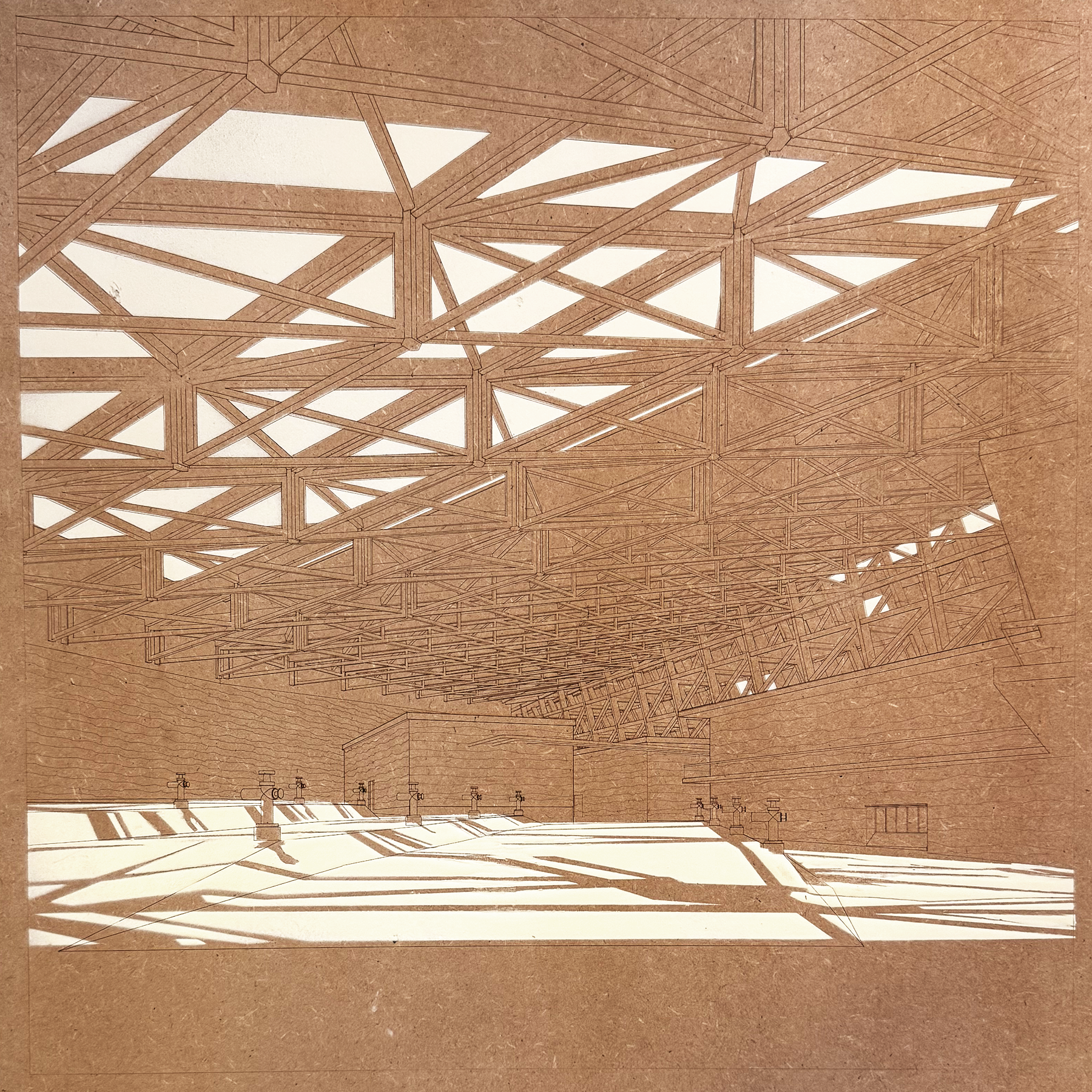RIDGES: DIRECT AIR CAPTURE FACILITY
Spring 2024
LANDFORM: LANDART
Land art transcends traditional artistic boundaries by blurring the line between creation and nature itself, revealing the profound relationship between human intervention and the earth’s natural processes. It is a reflection on the environment and our relationship with it. It is also one of the earliest forms of movement that raised concern about the environment. This becomes even more imperative today, as climate change remains one of humanity’s biggest challenges. Recent technological advancements like Direct Air Capture (DAC) propose a potential solution to extract carbon dioxide from the atmosphere and sequester it in the earth.
The project tackles creating land art through the lens and scale of a Direct Air Capture Facility. With hundreds, potentially thousands, of 8’ x 8’ fans designed to filter carbon from the air, this undertaking will indisputably reshape the landscape. The project investigates how these mechanical elements can establish presence in the natural landscape, and ultimately create a landart that draws out the dialogue between land and technology, trying to find a way to blur the boundaries between. The representation of this project, likewise, challenges the conventional boundaries and aims to blur between drawing and model.
SITE
Wind River Basin. Lander, Wyoming
The site rests 5 miles outside the exterior perimeter of the Wind River Reservation, at the base of the Wind River Mountain Range and the edge of the Wind River Basin. Wyoming has large, deep sedimentary basins with the right geological characteristics for storing carbon dioxide (CO2). The Wind River Basin contains porous rock formations that can safely hold injected CO2 deep underground. In addition, Wyoming is located near the Yellowstone Caldera, one of the largest active volcanic systems in the world. The region benefits from elevated geothermal gradients, making it a hotspot for geothermal energy, which acts as a green source of energy to capture carbon.
The unique formation at the perimeter of the wind river basin caught my attention, particularly inspired by the ancient monolithic rocks (Precambrian) that peel out of the earth in waves. The project tackles the idea of “recreating” a landform: continuation of these waves of ridges.
LandForm
The Wind River Basin in Wyoming is a geologically significant structural depression, formed through the tectonic warping of previously flat-lying rock strata during the Laramide Orogeny, a major mountain-building event that occurred between 70 to 40 million years ago. This event was driven by the subduction of the oceanic Farallon Plate beneath the North American Plate, which caused intense pressure and deformation in the Earth’s crust, This tectonic activity uplifted surrounding mountain ranges and exposed ancient Precambrian rocks, causing the peeling phenomenon of ancient rocks. The striking red hue is caused by the oxidation of iron minerals, such as hematite, within the rock. This process, similar to the rusting of iron, imparts a reddish hue to the sandstone layers, often referred to as “red beds.”
LandArt: Presence
Early explorations try to encapsulate the notion of presence: how a site specific artwork in its grand scale interacts with the natural world. Explorative presence sketches experiment with ideas such as walking through the earth via portals and pass throughs, as well as conceal and reveal of the ridges.
CONTINUING THE RIDGE
The project explores how technological infrastructure can merge with the landscape to form a new kind of land art. Inspired by the surrounding ridge lines, the design seeks to create a landform that continues the existing topography, using the scale and modularity of Direct Air Capture (DAC) technology as a generative tool. The DAC units, each measuring eight by eight feet, are positioned along the facade of the facility to form a new ridgeline. By mapping the textures and contours of the adjacent landscape onto the building’s surface, the facade becomes a displacement map that transforms mechanical repetition into a sculpted terrain. Through this process, the DACs are cloaked within a continuous geological form, blurring the boundaries between technology and land.
The architecture unfolds as a sequence of concealment and revelation—approaching the building feels like walking through the earth itself, passing through portals and cuts in the ridge before emerging into open space. The project is organized into four interrelated components: a central wing housing the DAC processing facility and visitor center; an east wing that accommodates the geothermal plant powering the system; a connective walkway wall that links the wings and frames the primary entrance; and a series of hillside housing units for workers and visitors overlooking the landscape. Together, these elements create an infrastructure that functions as both a carbon-capture system and an inhabitable landform, transforming industrial operation into an experience of presence within the terrain.





















